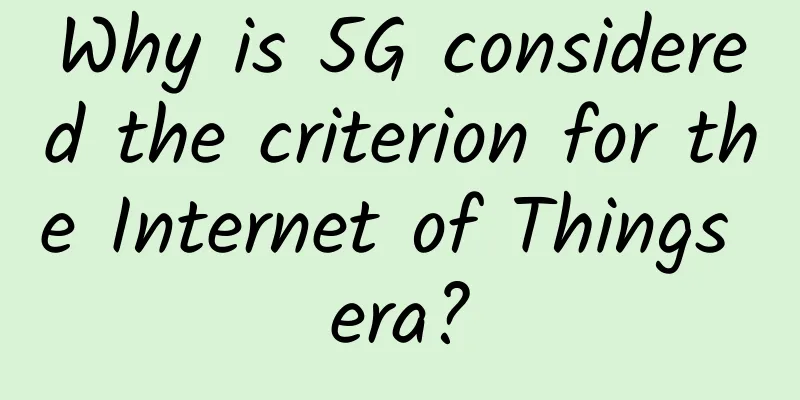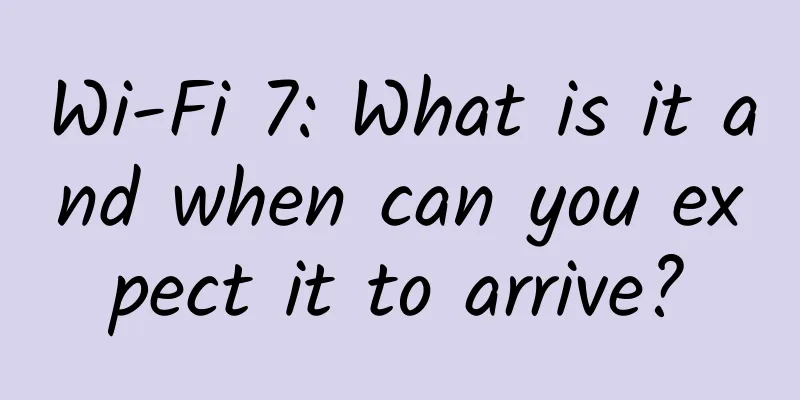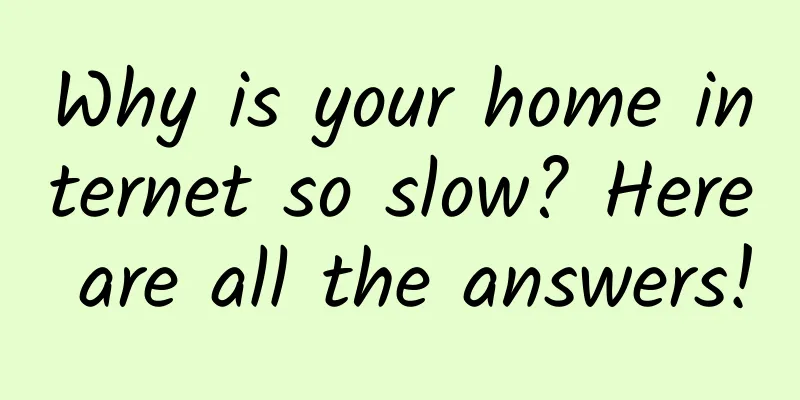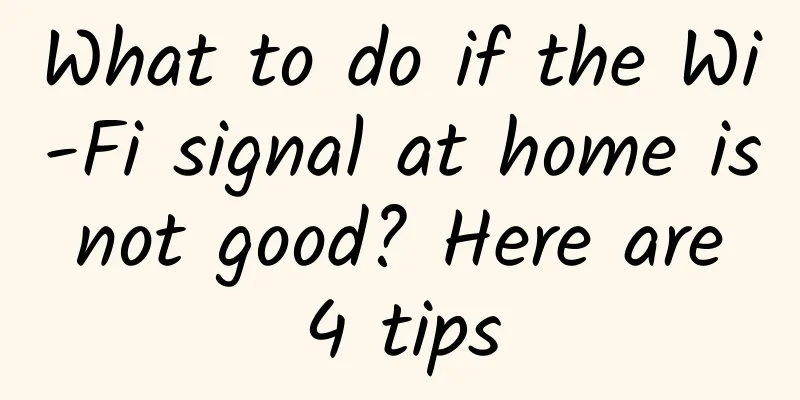Why is 5G considered the criterion for the Internet of Things era?

|
With the advent of the 4G era, the Internet industry has ushered in a new peak of development. Based on the 4G high-speed transmission mode, the interaction distance between people is gradually shortened, and the distance between people and objects is also shortened.
With the arrival of 5G, the transmission rate of 5G far exceeds that of 4G, but the development of 5G also faces a problem: Why do we need 5G and what can 5G bring to us? If we only look at the surface of 5G, we may only see features such as high speed and high capacity. However, are these really the only features of 5G? The rise of the 5G “uselessness” theory The birth of every new thing is accompanied by denial, and 5G is no exception. Since Huawei launched the Balong 5000 chip, 5G has entered people's lives, and Huawei has spared no effort to promote various 5G-based environments and terminals. In addition, in the consumer field, the shipment volume of 5G mobile phones is the criterion for determining whether a company has entered the 5G era. However, for some users, 5G seems to be of little use. If we analyze their subtext, it is not difficult to find the meaning: 1. At this point in 2020, 5G does not have much other functions except increasing speed; 2. After large-scale deployment, it will not be used on a large scale as expected. For individual consumers, 5G costs are relatively high. Currently, the 5G rates of the three major operators usually start at 129. In addition, with WiFi now available everywhere, most people do not use much wireless traffic. In this environment, the cost of 4G is relatively low, and its downlink speed also meets people's daily use, which is an important reason why some consumers are not paying attention to 5G. For B-side enterprises, the 5G industry has not yet been realized, especially in the industrial field. The lowest-priced 5G chip is a Huawei chip, which is priced at 999. However, most industrial users use WiFi connections for wireless transmission, and the usage rate of 4G-based communication chips is relatively small. In addition, in the video surveillance industry, which uses the largest amount of traffic, wireless communications are only used in specific scenarios. In cities with the largest number of deployments, most integrators (engineers) use fiber optic cable connections for more stable data transmission. In this regard, the theory that 5G is useless has also emerged in this environment. Is 5G really useless? For 5G users, the existence of 5G does not seem obvious, especially in an environment where 4G is currently sufficient for daily use. However, is 5G really entirely for C-end use? In the “three major application scenarios of 5G” announced by China Unicom, it is not difficult to see the application scope of 5G. (Photo courtesy of China Unicom) 1: Enhanced Mobile Broadband (eMBB) Two key aspects of enhanced mobile broadband will drive adoption and value creation in the 5G economy. The first aspect is to extend cellular coverage to a wider range of buildings, including office buildings, industrial parks, shopping malls and large venues. The second aspect is to increase capacity to meet the needs of more devices using large amounts of data, especially in local areas. These network improvements will support more efficient data transmission and reduce the cost per bit of data transmission, thereby driving greater use of broadband applications in mobile networks. 2: Massive Internet of Things (MIoT) 5G will leverage earlier investments in machine-to-machine (M2M) and traditional Internet of Things (IoT) applications, enabling significant increases in economies of scale to drive adoption and adoption across all industries. 5G can better meet the low power consumption requirements, work in both licensed and unlicensed spectrum and provide deeper and more flexible coverage, thus significantly reducing costs in massive IoT scenarios. This will also support the expansion of massive IoT and promote the greater use of mobile technology in massive IoT applications. 3: Mission-critical services (MCS) Mission-critical services represent a new market opportunity for mobile technology. This will be an important growth area for 5G and will support applications that require highly reliable, ultra-low latency connections as well as high security and availability. This will enable wireless technologies to deliver ultra-reliable connections that are indistinguishable from wired to support zero-fault-tolerant applications such as self-driving cars and remotely operated complex automation equipment. It is not difficult to find that the application of 5G for consumers is more about increasing transmission speed, and there is no other use. But for the whole society, the construction of 5G has extraordinary significance! A new generation of connections under infrastructure With the development of national infrastructure, the Internet of Things has developed rapidly, and more and more devices are connected to the network, from a small manhole cover to a car driving on the street to an airplane flying in the sky. No device can be separated from the transmission of the network. The result of large-scale networking is that network transmission channels are occupied. In order to ensure smooth communication, the frequencies used in various fields can only be constantly limited so that channels are not accidentally occupied. At the same time, with the increase of various types of equipment, the disadvantages of 4G networks are gradually becoming apparent - due to the small number of carriers, some infrastructure has to make corresponding "compromises". In the era of the Internet of Things, if we rely solely on 4G, the Internet of Things industry will find it difficult to develop - at least it will not have an environment for "rapid progress". To this end, in order to enter the era of the Internet of Things, the country urgently needs a network communication technology that is compatible with a large number of devices, stable transmission and high-frequency transmission, and 5G has become the best choice at present. However, 5G is not without its shortcomings. Its coverage area has become its most fatal shortcoming. Compared with 4G, the coverage of 5G base stations is about 1/3 of that of 4G. In order to solve this problem, NB-IoT has become an important technology for the three major operators to make up for the shortcomings of 5G. It is understood that the coverage of NB-IoT can reach 20km. With the support of NB-IoT, the country can carry out comprehensive infrastructure construction - deploy more IoT devices, so that various terminal devices can be integrated into the network and provide timely and effective data support for the next decision. In conclusion: Why is 5G so popular? The popularity of 5G is more out of helplessness. Although 5G communication technology has been rolled out in China, other industries based on 5G communication have not yet emerged. In the current domestic environment, most companies are satisfied with the support of 4G networks, and the high cost of 5G cannot bring about actual benefits. In order to make up for the costs incurred by 5G construction as much as possible, we can only choose to continuously promote the implementation of 5G terminal products, so that more users will choose 5G and let users pay for 5G. But it is undeniable that with the development of 5G, the basic communication, the construction of the Internet of Things will enter a period of rapid development in the future. |
>>: Network equipment and protocols - equipment
Recommend
[2024] Inventory of high-defense VPS merchants, US high-defense VPS/Hong Kong high-defense VPS
Continuing with the year-end summary, many friend...
Wu Hequan, Academician of the Chinese Academy of Engineering: 5G+ education faces seven challenges
Education is a major national and party priority....
How to create a new financing model for product-based IT
As technology departments move away from traditio...
Lessons from data center outages: Focus on infrastructure
The majority of downtime incidents over the past ...
Banwagong THE PLAN replenishment season payment starts from $27, available in US CN2 GIA/Japan/Hong Kong, etc.
Bandwagonhost THE PLAN VPS is back in stock. When...
Why is the WiFi signal full but the internet speed is still slow?
I believe many of my friends have encountered suc...
With the advent of the cloud era, what new challenges does IT operations and maintenance face?
In the era of cloud computing, IT system construc...
5G lacks "soul"? Advanced technology is coming
Judging from the current situation, 5.5G technolo...
Preliminary study of the network communication module in node
At present, we are in the Internet era, and Inter...
These specialized and innovative "little giants" gather in the Tianfu Software Park Industrial Cluster
On September 2, the Beijing Stock Exchange was es...
The existing network is difficult to achieve great success, will 5G be the savior of the Internet of Things?
5G is the fifth generation of mobile cellular tec...
How is LOCVPS? Simple test of LOCVPS Hong Kong Tai Po VPS
Last month, we conducted a simple test on LOCVPS ...
[Black Friday] Digital-vm offers 40% off, 1-10Gbps VPS in the US/Japan/Singapore and other data centers starting at $2.4 per month
Digital-vm sent an email about 40% Discount Black...
Build an HTTP experimental environment by yourself
[[326829]] This is the last lecture of the "...
Revitalizing smart cities with edge computing and 5G
[[381381]] As we recover from Covid-19, we have a...









